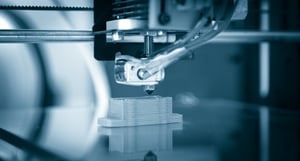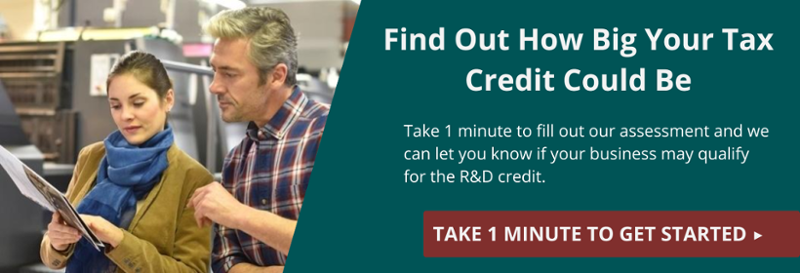
Manufacturing custom parts and/or products takes time, energy, investment, and a whole lot of steps to get from ideation to finished product. Thankfully, the government agrees that your efforts should be rewarded in the form of R&D Tax Credits.
Whether you're a major player in the industry, or a smaller company looking to break out, if you're creating custom manufactured parts or products, your work qualifies for the Research and Development Tax Credit. Here's how.
Trust the Process
Qualifying for R&D Tax Credits all comes down to the processes and procedures used in custom manufacturing. In general, your processes will meet the government's requirements if they involve significant testing and experimentation to initially develop or improve the overall cost, quality, or reliability of the process or end product.
Here are just a few examples of the manufacturing processes that would meet those criteria:
- Design Meetings (collaboration among staff, etc.)
- Flat Blank Layouts (design modifications, etc.)
- Tool Making (design, build, tryout, etc.)
- Engineering Process (new equipment, shop redesign, etc.)
- Proof of Concept (process documentation, etc.)
- Trial Production Run (first run of a product, etc.)
- Quality Approval (PPAP, ISIR, etc.)
- Shipping (package design, etc.)
Read our guide to the 9 Qualifying Expenses in Manufacturing
Add everything up, and it should become clear that many of the steps in your manufacturing operation may qualify for R&D tax credits.
It should also be noted that anything you do to optimize these processes along the way would also likely qualify.
Qualifying Expenses
The activities you complete throughout your manufacturing process aren't the only things that can earn you R&D tax credits. Many of the expenses you'll incur along the way will also qualify. In general, qualifying expenses fall into three categories:
- Wages
- Supply expenses
- Contract expenses
The way the IRS treats expenses in tax credit considerations has changed over the years, so you'll need to consult a tax professional to make sure your expenses meet the requirements. But, if it's an expense incurred to create a custom manufactured product, it's well worth your time to see if it qualifies.
Just Making Parts?
Many manufacturers assume that because they're just making parts for customers (and getting paid for it), they're not practicing research and development. This is where it actually pays to be wrong.
Don't short-change your business because you think your activities may not qualify! Check with an R&D Tax Professional to confirm, or you may be missing out on the funds you need to be more competitive, grow faster, and increase profitability.
Do My Activities Qualify?
The Four-Part Test is the surest way to know if the activities involved in creating your custom manufactured products meet the tax credit requirements.
The four criteria are:
By testing your activities against these four criteria, you should be able to determine whether they qualify for valuable tax credits.
Document Everything
Earning R&D tax credits (and avoiding an audit) many come down to your ability to prove that each activity you're claiming as a tax credit meets the government's requirements. That's why it's so critical that you maintain complete documents detailing each activity and how it fits into the scope of research and development. Don’t fret, though! If you’re working with an R&D Tax Credit professional (and you should be!), they will ensure that all documentation is adequate.





